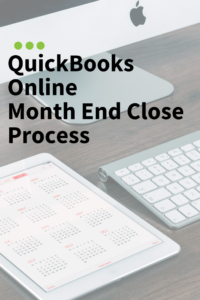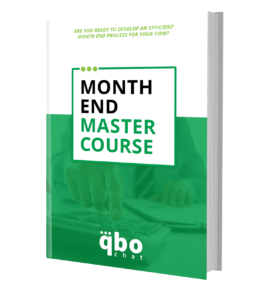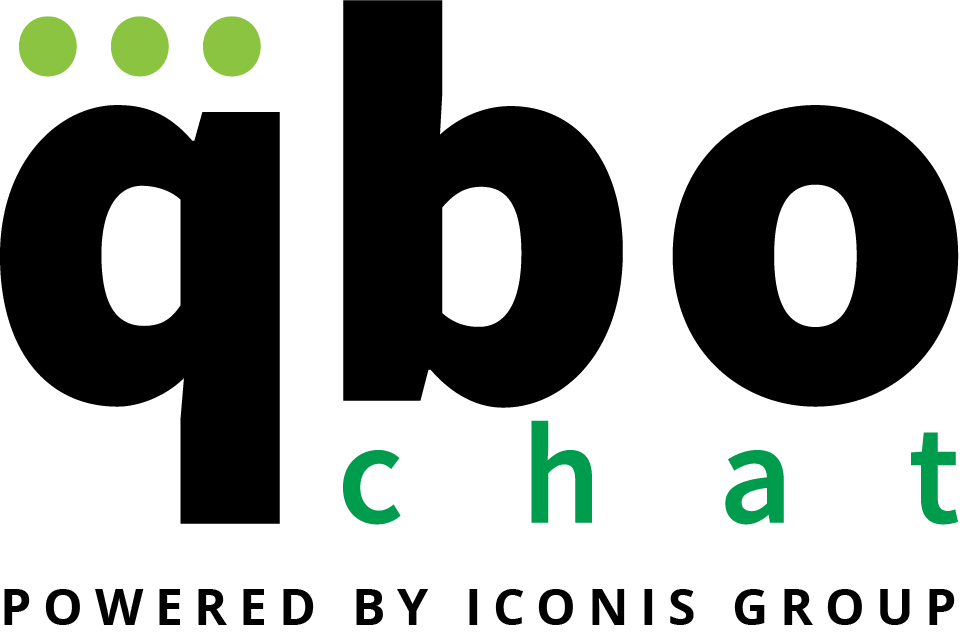QuickBooks Online Month End Close Process

Breaking Down the Month End Close Process in QuickBooks Online
Closing the books each month is an important part of the bookkeeping process. This is because it allows you to double-check the books to check for any errors or for anything that needs further investigation.
Over the years, I created a process for my month end work utilizing QuickBooks Online, since I’m a 100% QBO shop. It has helped me streamline my procedures, which has made me more efficient. This has given me more time in my practice. I wanted to share the QuickBooks Online month end close process with you so you can customize it to fit your needs.
If you want more training behind the month end process, you can always register for my QBO Month End Master Course that is available on OnDemand.
1. The Phases of Month End
Like every other routine, we need to have certain steps that we follow. I’ve organized the QuickBooks Online month end close process into different phases. We start month end prior to the end of the month, with a planning phase. Then once the month begins, we can jump into bank reconciliations and workpaper creation. Once you are near your deadline (mine is usually between the 15th and 20th of each month), then you complete your month end by reviewing everything and preparing reports for your clients.
-
Planning
I usually like to take some time on the last Friday of the month to plan out my upcoming month end. During this time, I list out which clients I have to complete month end for and schedule out the deadlines for the following phases.
Why can’t the deadlines be the same each month? Well, life is why. I have certain goals – like bank recs are done around the 5th, workpapers around the 10th, and reports are out by around the 15th. But, this isn’t always reality.
We need to work around things like weekends, holidays, other work we are doing, and vacations. So, for example, July 4th always seems to be a deal. Most of us aren’t working that day, so we need to plan all of our regular work and the additional work we end up doing during month end.
-
Bank Reconciliations
So, many people think bank reconciliations are a breeze, and they can be, but there are some things you should be paying attention to. The point of the reconciliation is to confirm the bank balance with some third-party information – like the bank statement.
What happens when the bank balance doesn’t match the bank statement? Then we need to figure out why. Was a check written this past month that just hasn’t cleared yet? {That’s fine.} Or, was it a check written last year that hasn’t cleared yet? {Not a good sign.} I often see bank reconciliations with a ton of unreconciled items.
There are plenty of acceptable reasons to have unreconciled items, but you need to make sure that you are looking at those transactions to make sure they should still be in the bank register. If you have a bunch of really old unreconciled items, then it is time to take a deep dive into those and see if they need to be moved, voided, or deleted.
Also, don’t forget that credit cards and loans should also be reconciled. I’ve also seen a ton of books where the credit card was never reconciled. You do get credit cards from banks, right? Again, think about this – if you can get third-party confirmation of the balance {like a statement} then it can be reconciled.
-
Workpapers
A lot of bookkeepers are confused when I mention the term “workpapers”. They haven’t heard it before and that’s fine! You are learning about it now. Workpapers come from audit {and very limited tax} days. We use workpapers to verify other balances in the financial systems. My focus is usually on the balance sheet.
Say you have prepaid expenses on the balance sheet. Well, how do you know the balances of what has been prepaid? Since the balance sheet is continuous up and down of transactions and doesn’t start over each year, you could spend a bunch of time trying to figure out that answer. Well, the easiest solution is to have a separate workpaper to track that. On the prepaid workpaper, you’d have the additional prepaid transactions and then the current expense of prior prepaid items. All of which add/subtract to the final balance shown on the balance sheet. {It if it is different, it’s time to investigate.}
-
Review & Report
The final phase of the month end process is to take a second look at all of your support. This is especially important if you have several team members in your firm. You should have at least one person doing the month end work and then someone else to review everything {seeing the bigger picture}.
During this time, I like to run a comparative balance sheet comparing the current period to the prior period. That way I can see if there are any accounts that have big changes that I need to investigate. And, at the same time, I’m verifying that my workpaper balances still match what is on the balance sheet. Remember, we might have done some clean up work, so we just want to make sure everything all matches up.
Next, I run a comparative profit & loss statement. I compare the current period {usually a month} to the prior period, last year’s same period, and year-to-date information. By doing this, I’m able to scan all the accounts to see if there are any anomalies. When something pops out, I make sure to look into it.
I also like to use “Reclassify Transactions” within QuickBooks Online to scan the profit & loss accounts. By doing so, I’m looking to see if there are deposits in the revenue accounts. This might not be good because revenue is usually recorded with an invoice or sales receipt. I also look at transactions to see if we are consistently categorizing transactions.
Finally, I’ll pull together my reporting for clients. I’ve created my own excel spreadsheets {after exporting reports and editing them to make a customized dashboard}. I’ve used QuickBooks Online’s “Management Reports”. And, I’ve also used third-party apps to create custom dashboards and reports for my clients. Whatever you end up using, keep track of what you provide and make sure to be consistent in providing that information each month.
Want to Learn More?

Share This Article!
5 Comments
Leave a Comment
You must be logged in to post a comment.


As a new bookkeeper preparing to launch my business, I appreciate the tips you shared here. I can see the value and need for this, and you made it understandable.
Hello! I enjoyed your article! I will be signing up for your course. I just hope I’m able to attend being that I still work during the days. Will it be recorded. I have lots of experience in month end closing in Corporate America with larger GL systems and only basic month end close with QB. So I’d like to dig deeper into that and learn the specifics.
Yes, each session will be recorded and saved within the private Facebook group. Feel free to ask questions on the videos or discussion board as often as you like during the course.
Hi, I wanted to see how much the course costs and how long it is?
The cost is $297 and the course is a month-long. You can find more information here.